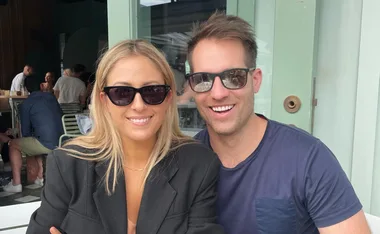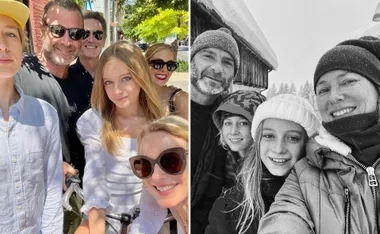When you first set eyes on your scrunched-up newborn, it’s hard to imagine her even straightening her legs, let alone using them to sit, stand and eventually walk. In fact, every day her body is becoming stronger and more coordinated as shemeets her movement milestones.
Paediatrician Dr Scott Dunlop says a baby’s physical abilities start to develop immediately after birth. “Gross motor, fine motor, language and even social abilities start to evolve as early as the first six weeks of life,” he says.
There are many ways you can help your tiny baby develop into a confident toddler. Our guide takes you through your child’s magical journey to mobility.
0–3 MONTHS – WHAT’S HAPPENING?
It takes time for your baby to ‘uncurl’. Peter Walker, a physical therapist and author of Developmental Baby Massage (Fair Winds Press) says, “Your baby is born in a ball-like position known as physiological flexion. As she adjusts to life outside the womb, she’ll stretch out her limbs.”
Your newborn’s head is heavy, wobbly and needs support. “Neck muscles will strengthen in the first three months, allowing her head and body control to improve,” says Scott. “This becomes the foundation for future motor development.”
Increased neck control allows your newborn to turn her head and even raise it when she’s lying on her back from about six to eight weeks. This is the beginning of learning to sit. Your baby might also lift her head and shoulders when lying on her tummy, helping her to develop the muscles she needs to roll from front to back.
Research shows that a baby placed on her front for short periods during waking hours – tummy time – will roll, crawl, sit, pull up and walk sooner than a baby who stays on her back. “Tummy time helps your baby to straighten out,” says Peter.
As your baby’s hand control increases you might also notice some progress with her fine motor skills.
How to encourage her development
Place her on your chest while you lie semi-reclined. Once she is used to this, move her to the floor on a bright playmate..
Give her tummy time daily to strengthen her neck and back. Place her hands by her head and gently turn her head to one side.
Stop if you think her neck’s getting tired. Never leave her unattended on her front.
3–6 MONTHS – WHAT’S HAPPENING?
As your baby enters her fourth month she’ll probably be able to lift her head and shoulders when lying on her tummy, using her arms for support. This strengthens the muscles she’ll soon use to sit and crawl. It also improves her view.
By this age your baby may have flipped over from front to back and, between four and six months, she may also be rolling back to front. This often happens when she starts bending her knees, bringing up her feet, then flipping over by accident. Rolling is an essential skill as it teaches your baby to transfer weight from one side of her body to the other. She’ll use the same technique to crawl, then walk.
If you hold your baby in a standing position she might bounce up and down on her feet. She’s testing out her knees. Into her fifth month your baby might also try to sit without assistance. She still needs to work out how to balance, so make sure she’s well supported.
How to encourage her development
Make noises to grab your baby’s attention, and change your position to encourage her to move. Standing at her feet, say, will have her craning her neck to see you – and she might roll over.
Join a ‘Mummy and me’ class. The stretching and twisting movements can help prepare her for increased mobility.
Wiggle a favourite toy next to the side she tends to roll towards.
6–9 MONTHS – WHAT’S HAPPENING?
Over the next few months your baby will probably master sitting unsupported, and when she wobbles she’ll be able to right herself. “Sitting unaided means she can now concentrate on other milestones, including fine motor skills,” says Scott. Now your baby is no longer using her hands for support, she’ll start grabbing at toys. “Sitting unsupported is closely linked to your baby’s ability to transfer objects from one hand to the other,” he says.
You might notice pre-crawling movements as your baby pushes herself up off the floor, rocking backwards and forwards on her hands and knees. And she’ll probably swap bouncing on your lap by bending her knees for a more ‘tramping’ motion, moving her feet in preparation for walking.
How to encourage her development
Check her position. Some babies ‘W’ sit: kneeling with their bottom between their legs. This position doesn’t require your child to use her balance, so encourage her to sit with her feet straight out in front of her instead.
Sing action songs. ‘Pat-A-Cake’ is a good choice as it encourages your baby to clap her hands instead of using them to balance, while ‘Row Your Boat’ teaches her to ‘right’ herself.
Put some toys beside her when she’s sitting to encourage her to turn from the waist and practise her balance. Toys placed just out of her reach when she’s on all fours encourage her to crawl to them.
9–12 MONTHS – WHAT’S HAPPENING?
Most babies start crawling between seven and 11 months, but not always in the conventional style. “Not all babies will crawl, and many won’t crawl in the typical fashion. Initial attempts will be uncoordinated, and may see your baby propel herself backwards,” says Scott.
“If her arms are stronger than her legs she might ‘commando crawl’, moving on her belly, or she might shuffle on her bottom.”
Although some babies never crawl, it’s a useful skill. “Crawling builds strength and stability in the shoulders and hips,” says Scott. “But remember, if your baby is achieving other motor milestones like pulling up to her knees while holding the couch, then pulling to her feet, not crawling is not necessarily a concern.” And if your baby is standing she could soon be cruising – side-stepping while holding onto furniture for support. This strengthens her hip muscles to support her legs for walking.
How to encourage her development
Help develop her stepping movement by placing a ball at her feet. Encourage her to kick it while you support her under her arms.
Play tug-of-war by pulling a towel. This activity helps improve her balance and strengthens her upper body for pulling herself into a standing position.
Place toys on the sofa to encourage your baby to pull up to get them.
12–18 MONTHS – WHAT’S HAPPENING?
Whether she’s rolling, crawling or shuffling on her bottom, chances are your baby has hit her first birthday with her own unique method of getting around. She might even be walking. “The average age for taking first steps is around 13 months, but the usual developmental window is nine to 18 months,” says Scott. “If an otherwise normal child isn’t walking by 18 months it might just be that Mum or Dad was a late walker and she is following suit. If you’re concerned, speak to your GP.”
Although your baby is likely to take to her feet over the next six months, physical therapist Peter Walker says it’s important to let your baby progress at her own pace. “Your child might not start walking as quickly as her peers, but perhaps her fine motor skills are excellent or she’s racing ahead with her speech,” he says.
Your baby will now be honing the ability to grab objects between her fingers and thumb as she starts feeding herself, or holds crayons and scribbles with them. She’ll also have the hand control to point – a gesture unique to humans. This key stage leads to naming objects and is therefore an important step in her grasp of language.
Your toddler might also be:
Deliberately dropping or throwing her toys to see where they go.
Showing a preference for one hand, but using both of them happily.
Holding small toys or objects in both hands at the same time.
Looking in the right direction for toys that have rolled out of sight.
Building a tower of two or more bricks.
Attempting to feed herself with a spoon.
How to encourage her development
The prospect of walking across a big space can be overwhelming, so start small by kneeling a short distance in front of her and cheering her on to reach you. Create a toddler-friendly environment by moving furniture together to help her cruise along.
Toys that encourage her to push and pull improve her balance and coordination. Pushcarts give beginner walkers support and confidence as they motor around, while pull-along toys are popular when toddlers realise they can walk backwards as well as forwards. Toys with a low, wide base are less likely to tip over.
18–24 MONTHS – WHAT’S HAPPENING?
By 18 months your toddler might be a proficient walker. She might even motor up the stairs – although she’s likely to need help getting back down. She’ll also enjoy scaling the sofa, but won’t be able to climb off it just yet.
“Your toddler will love testing her physical limits, frequently breaking into a run or racing around the house on a ride-on toy,” says Scott. “Trying out different methods of movement improves her coordination.”
Her language skills are developing, too. From the age of two, she’ll put words together in simple sentences, such as “Daddy work”. Now that she can run about the house and communicate, your toddler is becoming her own person.
How to encourage her development
Introduce her to building blocks to encourage fine motor skills.
Offer ride-on toys to help maintain her balance. They’ll also strengthen her legs as she pushes along with her feet.
Put on music and dance together. Your baby will strengthen the muscles in her legs as she jigs up and down.
Get out and about to different destinations. A visit to the park or beach will stimulate her senses.







.png?resize=380%2C285)


